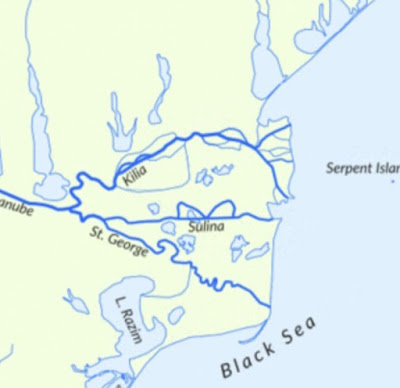The Danube enters the Black Sea via the Danube Delta, a massive area of some 1600 square miles of wetlands that is a UNESCO World Heritage Site. It is the second biggest delta in Europe after the Volga, the best preserved and is still expanding by about 40m a year due to the sediment brought down by the river. Water flows into the sea via three main channels: the Chilia branch in the north forms the border between Ukraine and Romania; the Sulina branch in the centre, partly canalised, used by shipping and the branch I will be taking to reach 'kilometre zero'; and the southern St George arm. Between these lies a myriad of waterways and lagoons which are constantly changing. Only about a fifth of the area is solid ground, the rest is wetland and marsh.
The delta is particularly known for its bird life. A large number of birds either breed here or migrate through from a number of areas and some 274 species have been identified by ornithologists. There is also a wide range of flora, some quite rare, and fauna including otter, mink, wild boar and reptiles. About 15,000 people live in the delta mostly making a living from fishing or tourism.
I intend to make two trips into the delta. The first to get to the end of the Danube, a journey only possible by boat, with an overnight stay in the town of Sulina, and the second will be a private tour into the smaller waterways of the delta to see some of the wildlife which will be at my next stop, Mahmudia, just over 20 miles further on from Tulcea. After that it is 100 miles along the Black Sea coast to Constanta and the end of my journey.




No comments:
Post a Comment